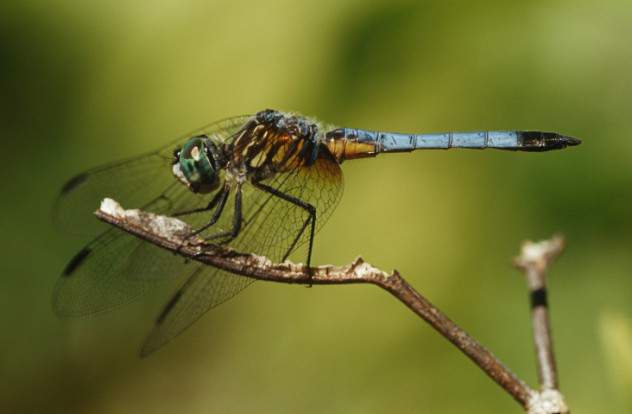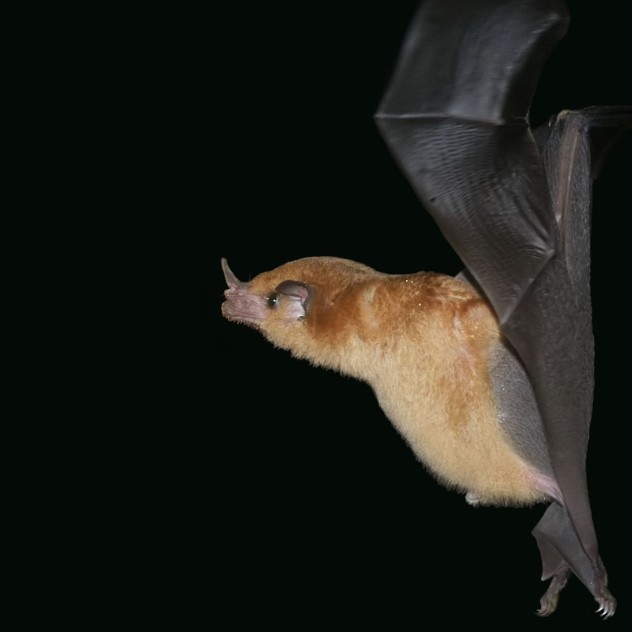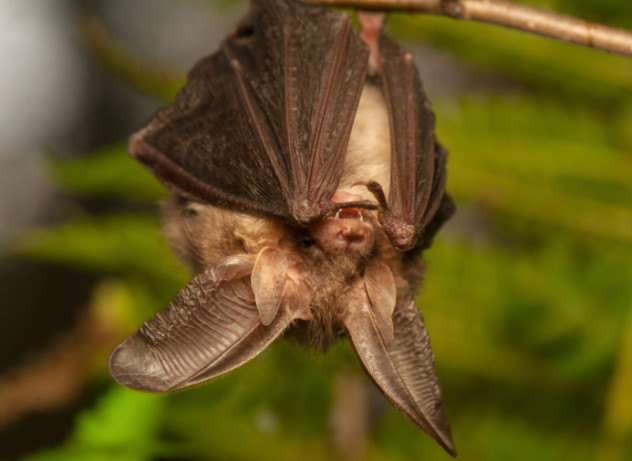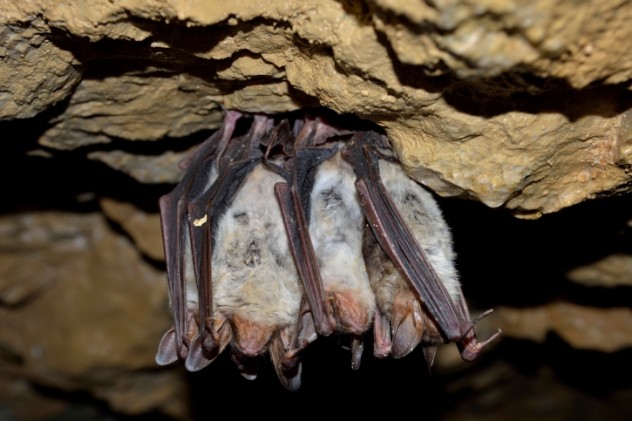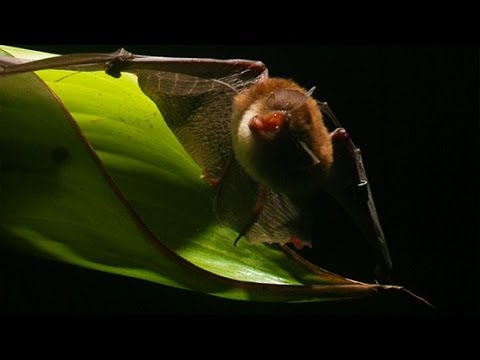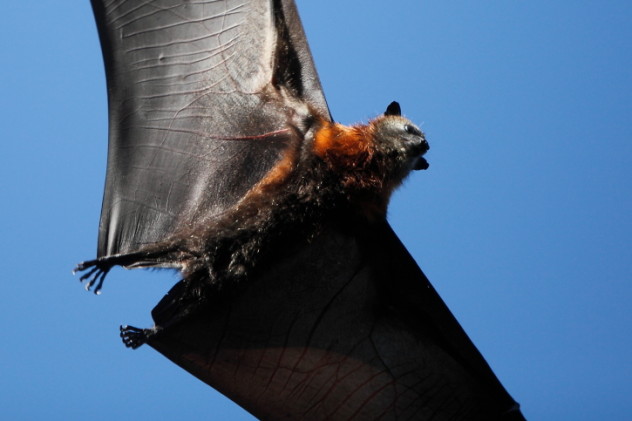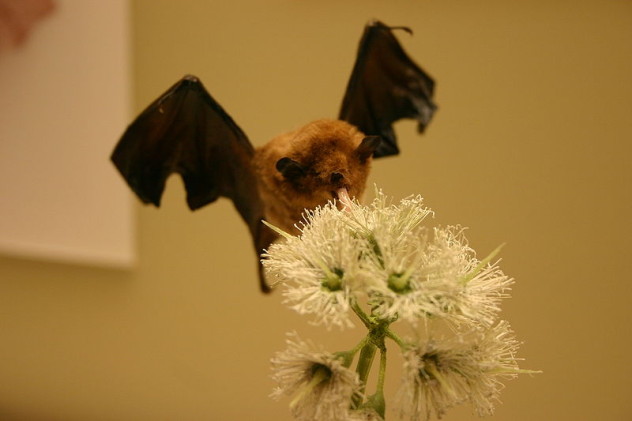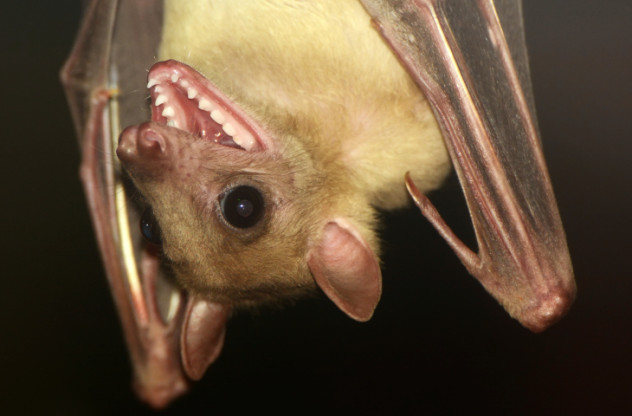10 They Can’t Be Tricked
It was once thought that bats could only detect moving insects. In fact, some moths hold perfectly still when they hear a bat coming. Apparently, the common big-eared bat of South America didn’t get the memo. Research has revealed that they can detect sleeping dragonflies that are holding perfectly still. The big-eared bat “ensonifies” the target with a constant stream of sonar. Within three seconds, they can determine if the target in question is edible. This way, the bat can chow on sleeping insects that apparently can’t hear a bat screaming at them. Of course, scientists thought all of this was impossible at first. There should be no way that a bat’s echolocation is sensitive enough to determine different shapes. They say it like this: “Active perception of silent and motionless prey in dense understory vegetation by echolocation alone has long been regarded impossible.” But the common big-eared bat does it anyway. Just to rub it in science’s face, the common big-eared bat can also tell the difference between a real dragonfly and a fake one. Researchers tested the bats by putting out real dragonflies and test dummies shaped like insects which were made of paper and tin foil. Though all the bats were interested in the fakes, not one took a bite out of the imposters. These bats can not only determine the shape of an object with echolocation, but they can hear the difference in the material as well.
9 Bats Echolocate Plants
Lots of bats survive on fruits alone, but they still only go out at night. So how do they find a meal in the dark? Scientists figured they had to be homing in with their noses. That’s because it should be really hard to sort out individual shapes among the foliage with echolocation. Everything should theoretically be a blur. Sure, it’s possible that bats can find bugs on leaves, but no one thought these winged rodents could use sound to distinguish between plants (bats aren’t really rodents, by the way). Glossophagine bats can do just that; they can find their favorite plants using only sound. Scientists have no idea how they accomplish this feat. “The echoes created by plants are highly complex signals, combining together all the reflections from the many leaves that a plant contains.” In other words, it’s incredibly difficult. Then again, glossophagine bats don’t seem to have any problems. They can sort out where the flowers and fruit are located without any difficulty. Some plants even have leaves shaped like satellite dishes designed specifically to attract bats. Once again, bats prove that we still have a lot to learn about sound.
8 High Frequency
A bat’s ultrasonic chirps can get pretty high. Human hearing functions in a range from 20 hertz to 20 kilohertz, which is pretty good. For reference, the best soprano singer can only reach a note of around 1.76 kilohertz. Most bats can chirp in a range of 12 to 160 kilohertz, which is comparable to dolphins. The clear-winged woolly bat makes the highest-pitched sound of any animal yet discovered. Their range starts at 235 kilohertz—significantly higher than humans can hear—and maxes out at 250 kilohertz. This little furry mammal can make sounds 120 times higher than the best singer in the world. Why do they need this powerful audio equipment? Researchers think these high frequencies “make the bats’ sonar beam very focused and short-ranged.” In the dense jungles where they live, this might give them the edge in locating insects among all the clutter of leaves and foliage. They can focus their sonic sight like no other bat.
7 Super Ears
The pointy ears of bats never get much attention. It’s always the sound itself that everyone is interested in, but never the receiving mechanism. Well, Virginia Tech’s engineering department finally checked out bat ears. At first, no one believed what they found. In one-tenth of a second (100 milliseconds), one of these bats can “alter his ear shape significantly in ways that would suit different acoustic sensing tasks.” How fast is that? It takes humans about three times longer to blink than it does for the horseshoe bat to change the shape of its ears to tune into specific echoes. Bat ears are super antennas. Not only can they wiggle their ears at blinding speeds, but they can “process overlapping echoes arriving just 2 millionths of a second apart and distinguish between objects that are just 0.3 millimeters apart.” For reference’s sake, 0.3 millimeters is about the width of a human hair. It’s no wonder the Navy studies bats. Their biological sonar equipment is far better than any technology we’ve come up with.
6 Bats Recognize Their Friends
Like us, bats have friends that they like to hang out with. Every day when the hundreds of bats in the colony get ready to bed down, they will roost with the same social group again and again. How do they find each other among the mob? They shout out to their friends, of course. Research has shown that bats can recognize the calls of individuals in their social group. Each bat has a “special vocalization that [carries] an individual acoustical signature.” This sounds an awful lot like saying bats have names. These unique individual vocalizations are thought to be greetings. Once friends meet up, they take turns smelling each other’s armpits—because nothing says BFFs like sniffing bat pits. Another way bats communicate their individuality is when they’re hunting for food. When multiple bats are hunting in the same area, they will emit a foraging call while homing in on prey. The purpose of this is to say, “Hey, this bug belongs to me.” Amazingly, these foraging calls are also unique to the individual, so when someone is shouting, “Mine!” the other bats in the area know who said it.
5 Telephone System
Colonies of disc-winged bats are nomads that stay on the move to avoid predators. They bed down in the curled-up leaves of heliconia and calathea plants, which can accommodate a handful of the small bats. How do these roaming furballs keep in contact with the rest of the colony if they’re spread out across a forest? They use the natural speaker system to signal their friends. The leaf funnels help amplify the calls of the bats inside increasing them by up to two decibels. The leaves also make them “highly directional.” Studies show that bats that were already in their leafy tent had a special call to help their friends home in on them. Bats on the outside called back, playing a game of Marco Polo, until they could locate their brethren. They typically had no problems finding the correct roost. The leaves work even better at turning up the volume of incoming calls, ramping them up by as much as 10 decibels. It’s like living inside of a megaphone.
4 Noisy Wings
Not all bats are vocal creatures. As a matter of fact, most Old World fruit bats don’t have the ability to create the same clicks and squeaks that most bats use for echolocation. That doesn’t mean they can’t get around at night, though. It was recently discovered that many kinds of fruit bats can navigate with clapping sounds they make with their wings. In fact, researchers were so astounded by this discovery that they went to great lengths to make sure these sounds weren’t coming from the bats mouths. They even went as far as “sealing the bats’ mouths and anesthetizing their tongues.” These bats got the Novocain-and-tape treatment just so scientists could be 100 percent sure they weren’t cheating by using their mouths. So, how are these bats using their wings to make noises that they use for echolocation? Believe it or not, no one has quite figured that out yet. Flying and clapping at the same time is a secret these clever mammals have yet to give up. It is, however, the first discovery of any animal using non-vocally produced sounds for navigation, and scientists are very excited about that.
3 Whisper Vision
Since bats find prey with echolocation, some of the prey animals, namely moths, have developed the ability to detect bat sonar. This illustrates the classic evolutionary battle between predator and prey. As a carnivore develops a weapon, its potential meal figures out a way to counter it. Many moths will drop to the ground and hold still when they hear a bat approaching. The Pallas’s long-tongued bat has figured out a way to beat the moth’s sensitive hearing. Researchers were surprised to find that these bats dined almost exclusively on moths that should be able to hear them coming. So how do they catch their meal? The Pallas’s long-tongued bat employs a quieter form of sonar that the moths can’t detect. Instead of echolocation, they have whisperlocation. They use the equivalent of bat stealth to swoop down on the unsuspecting moths. Research on another type of whispering bat called the barbastelle showed that its vocalizations were 100 times fainter than those of other bats.
2 Fastest Mouth Around
There are normal, run-of-the-mill muscles, and then there are super muscles. Rattlesnakes have extreme muscles in their tails that make the rattle work at super speeds. The toadfish’s swim bladder is the fastest muscle among vertebrates. When it comes to mammals, nothing is faster than the larynx of a bat. It can contract 200 times per second. That’s 100 times faster than you can blink. With every contraction, they can make a sound. Researchers wondered what the upper limit of bat sonar was. Since it only takes one millisecond for echoes to return to the bat, their calls would start to overlap at 400 echoes per second. Studies show they can hear up to 400 echoes per second, so it’s only the larynx slowing them down. In theory, there may be some bats out there that can break the existing record. No other known mammal has any muscle that moves this fast. The reason they can perform these astounding sonic feats is that their cells actually have more mitochondria (the batteries of the body) and calcium-shuttling proteins. This gives them more power and allows them to contract more often. Their muscles are literally supercharged.
1 Bats Go Fishing
Some bats hunt fish. This seems to defy all reason; echolocation doesn’t penetrate water. It just bounces off like hitting a wall. So, how do fishing bats catch fish at all? Their echolocation is so sensitive that it can detect the ripples on the surface that give away the fish underneath. The bat never actually sees the fish. Their echolocation never reaches the prey itself. They find fish beneath the surface by reading the troughs and peaks of the water with sound. That is an astounding trick. It turns out that some bats use the same technique for frogs. If a frog sitting in the water sees a bat, it will hold still. The ripples around it give it away. Another interesting fact about bats and water is that from birth, they are programmed to believe any acoustically smooth surface is water, and they’ll fly down to get a drink. Apparently, if one were to put a smooth plate in the jungle, young bats would dive into it face-first in an attempt to quench their thirst. So on one hand, bat sonar is so acute that they can read the surface of a lake like a book. On the other hand, juvenile bats can’t tell the difference between a serving platter and a puddle. Monte Richard II also writes for Cracked.com. Currently he is obsessed with a video game and posts games on YouTube under the name LibraScorn.
